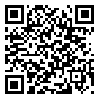BibTeX | RIS | EndNote | Medlars | ProCite | Reference Manager | RefWorks
Send citation to:
URL: http://hakim.tums.ac.ir/article-1-1123-en.html
Raghfar H1 * (PhD) , Khezri M2 (PhD), Vaez Mahdavi Z2 (MSc), Sangari Mohazab K1 (MSc)
1 Department of Economics, School of Social Sciences & Economics, Alzahra University, Tehran, Iran
2 Department of Economics, School of Law, Political Sciences, South Tehran Branch, Azad University, Tehran, Iran
Received: 22 May 2012, Accepted: 14 Mar 2013
Abstract
Introduction: A main goal of health systems is to provide financial security against diseases by which catastrophic expenditures and poverty can occur. The cost of health care services is high and households are main bearers of financial loads rather than health insurance companies in Iran. Moreover, due to inadequate access to health care centers and inadequate coverage of health insurance services, households who have been covered by insurance services have the same problem too. Increasing health care costs in households' consumption basket result in increasing households' expenditures that might lead to misidentification of the poor households. The aim of this study was to assess the impact of health care expenditures on poverty among Iranian households.
Methods: In this study, we used households' micro data provided by the income-expenditure household survey conducted by the Iran Statistics Center. The FGT index (1984) was used to measure poverty and assess the impact of out of pocket payments in health care services on the households’ poverty status.
Results: Out of pocket payments by the households have increased health expenditures and have led households to poverty in both rural and urban areas. In rural areas, household poverty incidence increased by 4% due to increase in tariffs of health care services in 2009. The highest increase in poverty incidence in urban areas was 3.4% which was occurred in 2000. In general, increase in out of pocket payments resulted in increase in poverty incidence in the country as follows: in 1984: 2.1% in 1989: 1.6% in 1995: 2000 in 2004: 3% and in 2009: 3.6%.
Conclusion: Increases in health care expenditures have been led to poverty increase from 1 to 4 percent in different urban and rural areas during period of the study. Every year, a significant number of individuals in both rural and urban areas have been dragged below poverty line due to catastrophic health expenditures. Meanwhile, due to registration of high expenditure for the households, they were not identified as the poor.
Key words: poverty line, FGT index, health care payments
Please cite this article as follows:
Raghfar H, Khezri M, Vaez Mahdavi Z, Sangesari Mohazab K. Impact of Health Insurance Inefficiency on Poverty among Iranian Households. Hakim Research Journal 2013 16(1): 9- 19.
* Corresponding Author: Deh vanak Ave, Alzahra University, School of Social Sciences & Economics, Department of Economics, Tehran, Iran, Tel: +98- 21- 88044040, Fax: +98- 21- 88035187, E-mail: raghfar@alzahra.ac.ir
Received: 2013/06/19 | Accepted: 2013/06/26 | Published: 2013/06/26
| Rights and permissions | |
 |
This work is licensed under a Creative Commons Attribution-NonCommercial 4.0 International License. |





